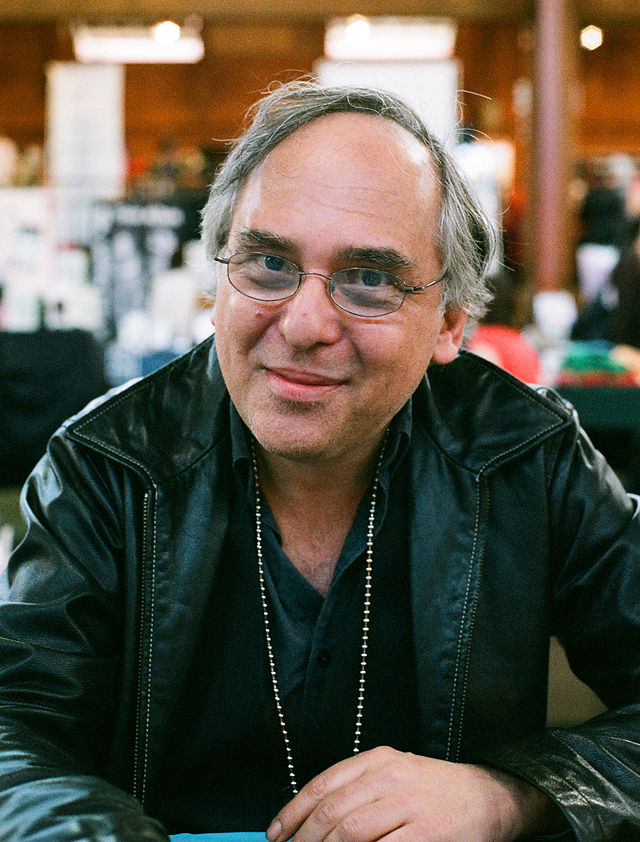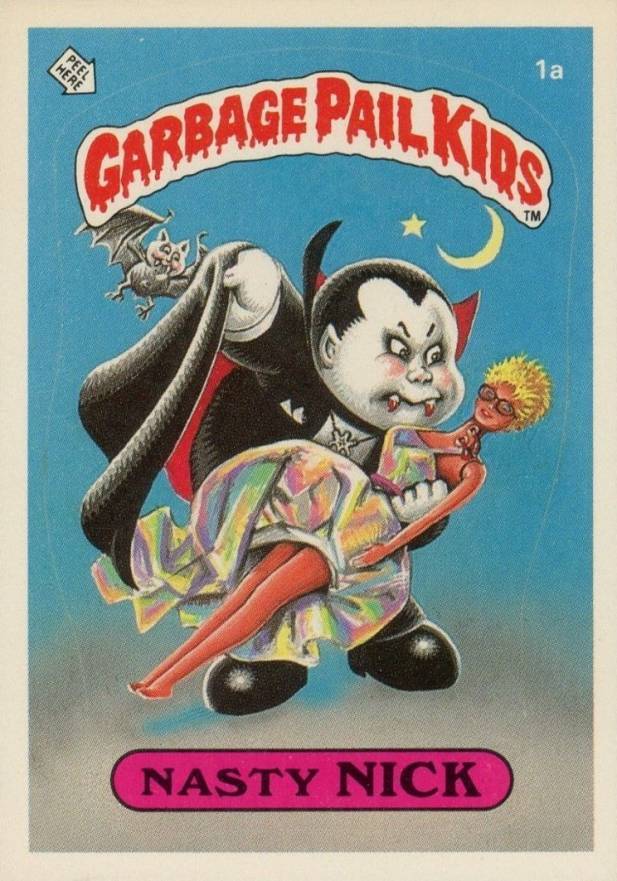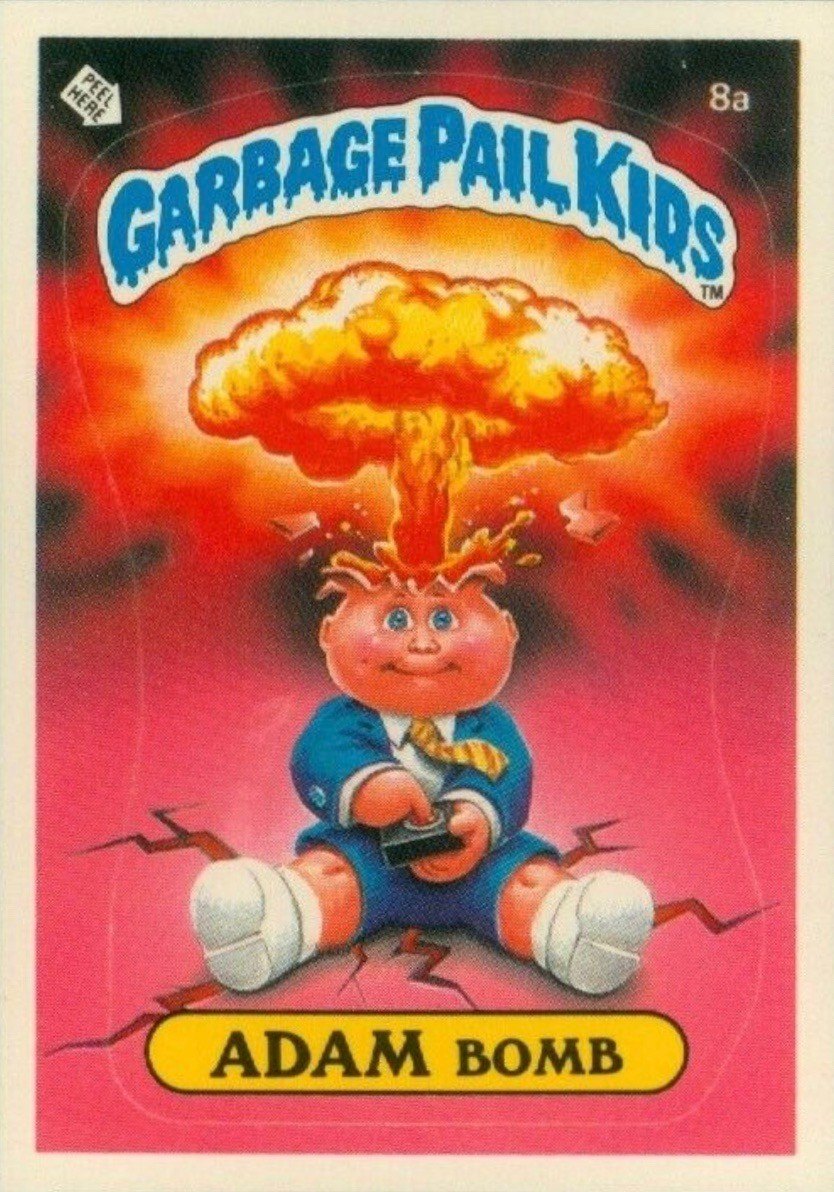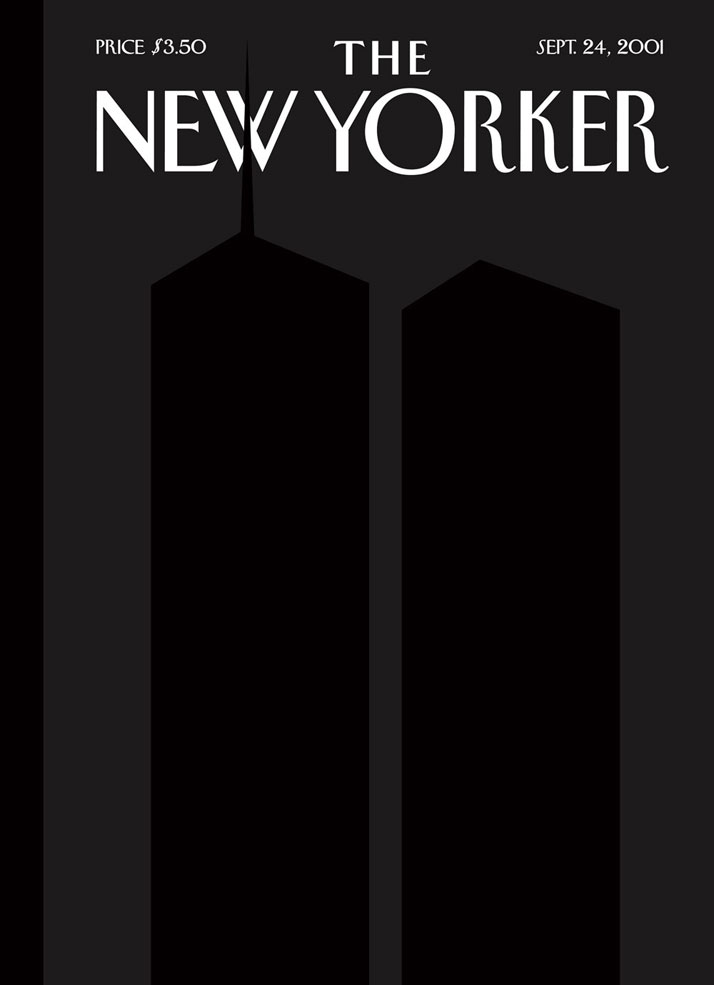Art Spiegelman

15 February: Itzhak Avraham ben Zeev is born, in Stockholm, Sweden. Both of his parents, Vladek and Anja, have survived the German concentration camps of WWII.
The Spiegelman family emigrates to the US. When they enter the US they anglicize their names to William, Anna, and Arthur. They eventually settle in Rego Park, in Queens, NY.
Art begins cartooning, imitating material from Mad Magazine.
By the time he's in junior high, AS is contributing to fanzines and founds his own, Blasé.
AS attends the High School of Art and Design in Manhattan. He's already selling his work to places like The Long Island Press. United Features Syndicate, the largest syndicator of editorials and comic strips in the US, offers him the opportunity to produce a syndicated comic strip. He turns them down. While in high school, the art director of Topps Chewing Gum Company encourages him to apply to Topps after he graduates.
Although his parents urge him to study to be a dentist, AS enrolls in Harpur College to study art and philosophy. He takes an art job at Topps, which provides him with an income for the next two decades
While still in school, AS works with Topps' Product Development Department as a creative consultant making trading cards and related products, such as the Wacky Packages series of parodic trading cards begun in 1967.
AS also begins self-published underground comix. He has cartoons published in underground publications such as the East Village Other . He spends a few months in San Francisco, which is just becoming the hub of underground comix in the US.
AS starts doing a lot of LSD. He has a breakdown and is institutionalized for a month in Binghamton State Mental Hospital.
Anja Spiegelman commits suicide.
AS moves to San Francisco and becomes a fixture in the underground comix scene.
Justin Green, a cartoonist known as "the father of autobiographical comics," asks AS to write a three-page strip for the first issue of Funny Aminals [sic]. AS begins a strip about racism, with African-Americans as mice and Ku Klux Klan members as cats. But he abandons that and works on his parents' experiences of the Holocaust. He calls the strip "Maus," and depicts the Jews as mice persecuted by die Katzen, who are Nazis portrayed cats. The internal narrator tells the story to another mouse named "Mickey." Later in life, AS will say that with this story he finally felt like he found his voice.
AS publishes "Prisoner on the Hell Planet", an expressionistic work dealing with his mother's suicide in Short Order Comix #1, which he edited.
AS, with Bill Griffith, co-edits the anthology Arcade. It has covers by Robert Crumb, and features work by Charles Bukowski and William S. Burroughs.
AS moves back to New York City.
AS marries Françoise Mouly, a French architect. He gets her a job as a colorist at Marvel.
AS begins to interview his father about his experiences during the Holocaust. Françoise is learning the printing trade, and together they plan to edit and print a comics anthology, Raw.
AS begins teaching at The School of Visual Arts in New York.
The first issue of Raw is published. It becomes the most important publication of the 1980s alternative comics movement,
Maus appears one chapter at a time as an insert in Raw, beginning with the second issue in December 1980
Vladek Spiegelman dies.
The Hollywood director and producer Steven Spielberg begins work on an animated film about Jewish mice who escape persecution in Eastern Europe by fleeing to the US. AS is sure that the film is inspired by Maus and is eager to have his unfinished book come out before the movie to avoid comparisons.


Adam Bomb, valued in 2022 at $4,000
Noting the immense popularity of the Cabbage Patch Kids series of dolls, AS creates the parodic sticker card series Garbage Pail Kids for Topps. The gross-out factor of the cards was controversial with parent groups, and the popularity of these cards started a gross-out fad among children. They are banned in many schools in the US. The success of these cards leads to the production of a live-action movie, The Garbage Pail Kids Movie, in 1987.
Spielberg's An American Tale is released.
Pantheon Press agrees to publish the first six chapters of Maus. It comes out with the title, Maus: A Survivor's Tale. It is subtitled My Father Bleeds History. It becomes very popular, partly because it's sold in bookstores, not just in comics shops.
Several parents groups complain to CBS about an animated television series they are producing based on the Garbage Pail Kids. It is never broadcast in the US< but becomes very popular in about a dozen countries around the world.
The second half of Maus is published. It is subtitled And Here My Troubles Began.
Maus is awarded a special Pulitzer Prize. It is also given an exhibition exhibition at New York's Museum of Modern Art. Both are unprecedented for a comic or graphic novel.
AS is hired by The New Yorker as a contributing artist. His very first cover, for Valentine's Day 1993, causes controversy. Over the course of his decade of work at The New Yorker, they publish 21 covers by AS, and reject several others for being too outrageous.
During this decade AS gains more fame and popularity. His work runs the gamut from illustrating a book-length poem that was originally banned for its lewdness to writing his first children's book. His influence and connections in New York cartooning circles cause some blowback from other cartoonists.
AS, Françoise, and their daughter Nadja live near the World Trade Center site, so the September 11 attacks cause them great anxiety. AS and Françoise collaborate on the most iconic image from that event, a black-on-black New Yorker cover, published on September 24, 2001.

The German newspaper Die Zeit commissions a work from AS on the September 11 attacks. He creates In the Shadow of No Towers, where it is serialized throughout 2003. The only American periodical to carry it is The Jewish Daily Forward.
The collected work of In the Shadow of No Towers is published as an oversized board book of two-page spreads which has to be turned on end to read.
AS releases Breakdowns. This autobiographical collection contains Portrait of the Artist as a Young %@&*!, which traces his evolution as an artist, and Breakdowns, a collection of his comics from the 1970s.
MetaMaus is published, which describes the story behind Maus.
An overview of AS's entire career, Co-Mix: A Retrospective of Comics, Graphics, and Scraps, is published.